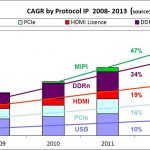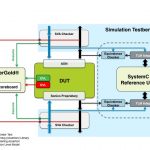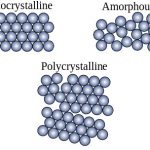I would like to further discuss this graphic (presented during IP-SoC 2014 by John Koeter, VP of Marketing IP and prototyping, Synopsys) and focus on Active Design and Tapeouts at 28nm. In fact the very first activity appeared in Q1 2007, but it was only during 2010 that 28nm become popular, after the first Tapeouts coming in Q1 and… Read More
Electronic Design Automation
IP-SoC 2014 Top Class Presentations…
… were given to an ever shrinking audience. This is IP-SoC paradox: audience has enjoyed very good presentations made by Cadence, Synopsys or ST-Microelectronic, to name just a few. As far as I am concerned, I was happy to present the “Interface IP Winners and Losers (Protocols)” in the amphitheater during the first day, enjoying… Read More
Using Cadence PVS for Signoff at TowerJazz
TowerJazzis a specialty foundry that provides IC manufacturing into several markets, like: RF, high-performance analog, power, imaging, consumer, automotive, medical, industrial and aerospace/defense. In June there was a presentation from Ofer Tamir of TowerJazz at DACin the Cadence theatre, so I had a chance this week … Read More
How Sonics Uses Jasper Formal Verification
The Jasper part of Cadence announced jointly with Sonics a relationship whereby Sonics uses JasperGold Apps as part of their verification. I talked to Drew Wingard, the CTO, about how they use it.
One way is during the day when their design engineers use Jasper as part of their verification arsenal. Interestingly it is the design… Read More
Power-Aware Verification in Mixed-Signal Simulation
My Samsung Galaxy Note 2 phone lasts about 1.5 days on a single battery charge, thanks in part to the clever power conservation approaches like when the screen is automatically dimmed then turned off after no activity. Mobile phones and many other battery-powered devices used today all need power-saving designs, which then means… Read More
Look who is Leading the World Semiconductor Business
A couple of days ago I was reading a news article which said how long the world economy will be dependent on a single engine to drive it; obviously that single engine is USA. If we consider the overall economy, definitely USA is driving it, and semiconductor is a large part of it. The semiconductor is driving electronics and that is attracting… Read More
Amorphous Silicon and TFTs
Most ICs are fabricated with crystalline silicon (c-Si), which is a tetrahedral structure forming a well-ordered crystal lattice. There’s another form of semiconductor material called amorphous silicon (a-Si) which has no long-range periodic order. It turns out that a-Si is a great material for the active layer in thin-film… Read More
Lucio and the Kaufman Award
Tuesday was the Kaufman award dinner. This year it was awarded to Lucio Lanza. Last week I wrote about how Lucio ended up in EDA, although that was not where he finished up. He is currently a venture capitalist running Lanza Technology Ventures, one of the few VCs to make any investments in the EDA/IP/semiconductor space. Also, unlike… Read More
Semiconductor Safety
Semiconductors and automotive are now like peanut butter and jelly. Certainly you can have one without the other but why would you? I remember when a car first talked to me telling me that the door was ajar. It sounded more like, “the door is a jar” but I got the point. Now my car tells me just about everything including what is wrong with… Read More
In-Design DFM Signoff for 14nm FinFET Designs
While FinFET yield controversy is going on, I see a lot being done to improve that yield by various means. One prime trend today, it must be, it’s worthwhile, is to pull up various signoffs as early as possible during the design cycle. And DFM signoff is a must with respect to yield of fabrication. This reminds me about my patents filed… Read More









Website Developers May Have Most to Fear From AI